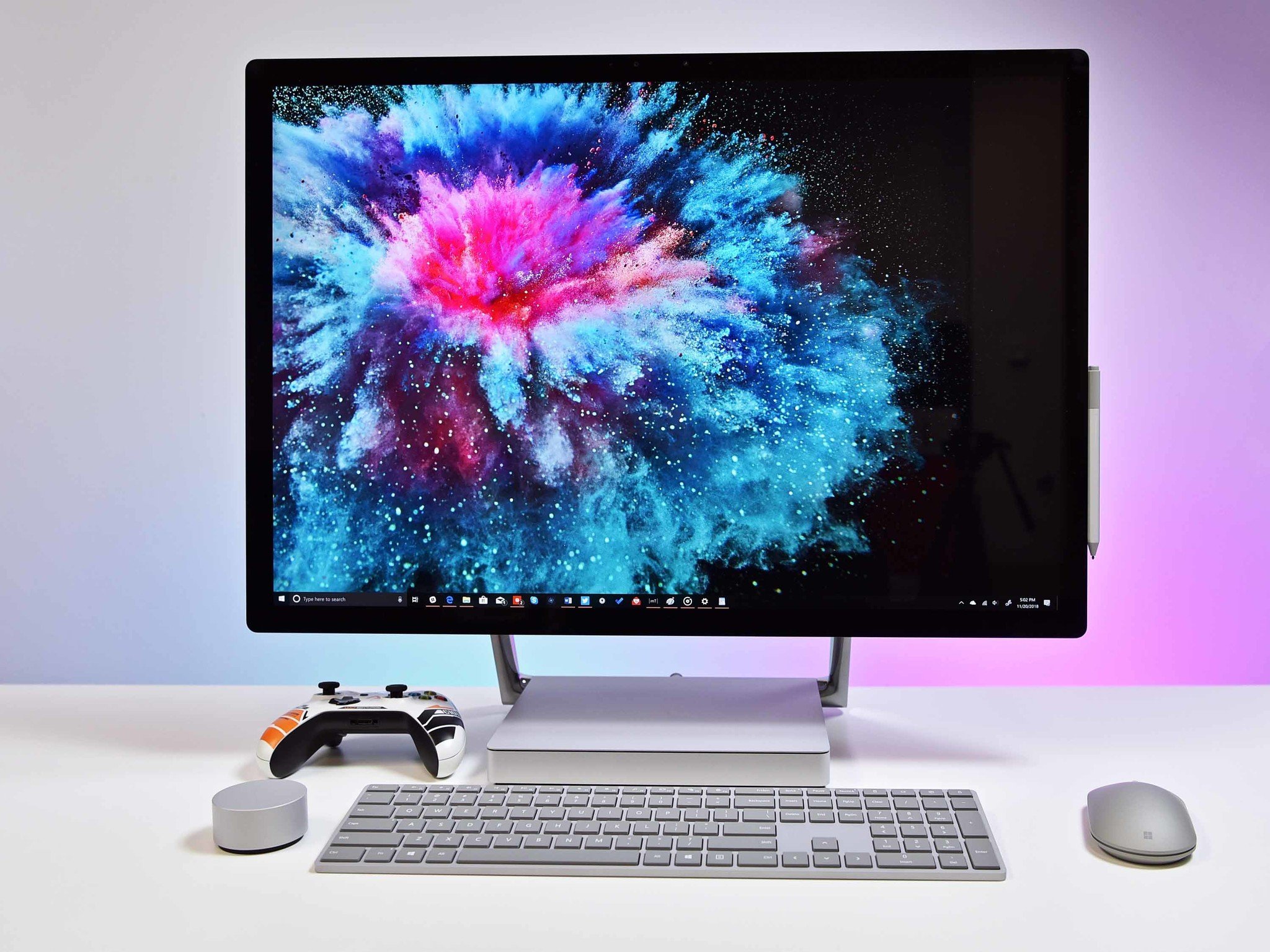10 years of Surface: What we want to see next
What’s in store for Surface in the next 10 years? Here’s what the team at Windows Central has been dreaming about.

It’s hard to believe, but Surface has been around for 10 years. The first Surface product ever was unveiled on June 18, 2012; time sure does fly when you’re making high-end PCs and accessories. Surface products have come a long way over the years, and we’re celebrating all 10 years of Surface this week at Windows Central.
We’ve been here to witness the highs and lows of Surface over the last decade, and it got us to thinking about what might be in store for the next decade. We can’t foresee the future, but we sure can give Microsoft some help coming up with ideas. Here’s what we want to see next from Surface.
Zac Bowden, Senior Editor
I'd like to see Microsoft release a foldable Windows laptop/tablet, perhaps in a similar shape to the Surface Neo, just with a bigger single foldable display instead of two small 9-inch screens. I'm fascinated by foldables in the PC space, and it's an area of the market that's still up and coming, so it would be great to see what Microsoft can do there.
Additionally, I would love to see the company release an 11-inch Surface Pro X. I do like the 13-inch one, but I'd prefer something that's similar in size to the Surface Go, but with an ARM flagship processor powering things under the hood. It would compete head-to-head with the 11-inch iPad Pro, too.
Chuong Nguyen, Senior Editor
All the latest news, reviews, and guides for Windows and Xbox diehards.
Given how powerful portables have become in recent years, the venerable and humble desktop has lost its luster for many. The Surface Studio is one example. It was a gorgeous piece of machinery with impeccable build quality, a focus on productivity and creativity with its large display, and a clean and modern design that has fallen out of favor. However, given interest in hybrid and remote work, the desktop is getting its own renaissance, and Microsoft could find a new audience with a retooled Surface Studio.
One of the problems with early Surface Studios is Microsoft didn’t ship its flagship desktop with the best silicon for its time — even to the audience of professional artists the company was courting. With new, powerful, and power-efficient chipsets from AMD, Intel, and NVIDIA, a new generation of Surface Studio could give Microsoft’s venerable desktop new life. Microsoft could deliver the new Surface desktop with processing options from AMD’s latest Ryzen and Intel’s latest generation of Core CPUs along with GPU solutions from all three chipmakers. Enhanced microphones, better speakers, and a crystal-clear camera will make the Surface Studio a perfect work-from-home desktop.
Additionally, a Surface Studio X could bring Arm processing and graphics power to the desktop, allowing Microsoft to take on Apple’s desktop PCs. Expanding on its commitment to ARM from the Surface Pro X could make the platform more attractive to game developers and reshape what it means to own a gaming PC.
Sean Endicott, Staff News Writer
There's no shortage of great monitors these days. You can pick up anything ranging from a gargantuan curved display to a budget-friendly screen for your desk. But there's one monitor that stands out among the rest to me, but unfortunately, it's attached to an aging PC that Microsoft appears to have forgotten about. I'm speaking, of course, about the Surface Studio, a one-of-a-kind machine that provides a massive space for productivity that can seamlessly slide down into an art canvas.
A few years back, I worked at a company that provided me with a Surface Studio. Each day I sat in front of the giant, in awe of its beauty and ingenuity. The only problem was that even back then, the Surface Studio fell behind in terms of specs. The Surface Studio 2 did little to alleviate this, at least in comparison to how other PCs have improved in the same timeframe.
What I'd like to see is a standalone monitor from Microsoft with the form factor of the Surface Studio's display. Creators, gamers, and anyone else could then use their own PC with the versatile display of the Studio lineup. People could select the power and specs that they want at their desk and update their PC at will, all without having to replace the Studio display.
Cale Hunt, Senior Editor
There are a few reasons I don’t regularly buy Surface PCs (though I do have a few hanging around). The first reason comes down to processor choice. Surface products never miss when it comes to design and feel, but they’re generally released with performance hardware that’s already falling behind. With the generational advances that CPUs are making, this can mean a whole lot of power left behind. If Microsoft could start releasing PCs with the latest hardware, I’d no doubt be much more tempted to invest.
Another reason has to do with upgradeability and port selection. Microsoft has made progress lately in this department — the Surface Pro 8 FINALLY has Thunderbolt 4 and an accessible SSD — and I’d definitely like to see this continue as we see what Surface has in store for the next 10 years. On that note, an updated Surface Dock 2 that’s more in line with the best Thunderbolt 4 docks would be a fantastic addition to the Surface lineup.
Daniel Thorp-Lancaster, Editor-in-Chief
This is a major shot in the dark, but I've always been curious to see what the Surface team could do with its take on the HoloLens. Now that HoloLens is officially under Panos Panay's purview, that pipedream could be closer to becoming reality. Could a SurfaceLens be in our (distant) future?
The issue is HoloLens has never been a consumer device in the slightest. It has always been geared at industrial, medical, and military applications. While we've seen developers do some neat stuff outside of that niche, HoloLens has never had consumer ambitions (publicly, at least).
A potential SurfaceLens could take the learnings Microsoft has from years of deploying HoloLens in the wild and put them towards more consumer applications. It might not be as splashy as the big plans Apple reportedly has for its AR headset. However, Surface's design prowess combined with consumer AR ambitions would make for a sleek alternative.
More Surface anniversary content to enjoy
We are understandably passionate about Microsoft's Surface, and we've been busy creating a bunch of great content to coincide with the 10th anniversary.
Above is an embedded video in which Executive Editor Daniel Rubino and Senior Editors Zac Bowden and Jez Corden rank nearly every Surface product that Microsoft has released. It's lengthy, but it's entertaining and quite informative.
Zac Bowden also put together a list of the highs and lows of Surface over the years, with some surprising entries that you'll want to check out. Our News Writer Sean Endicott has a look at how Surface inspired a wave of 2-in-1 PCs over the years, and our Senior Editor Rich Edmonds explains why he's never purchased a Surface product.

Home to the most invested and passionate Microsoft fans, Windows Central is the next generation destination for news, reviews, advice and buying recommendations on the Windows, PC and Xbox ecosystems, following all products, apps, software, AI advancements, and accessories. We've been around for more than decade, and we take our jobs seriously. Windows Central writers and editors value accuracy and editorial independence in everything we do, never receiving compensation for coverage and never pulling punches.





